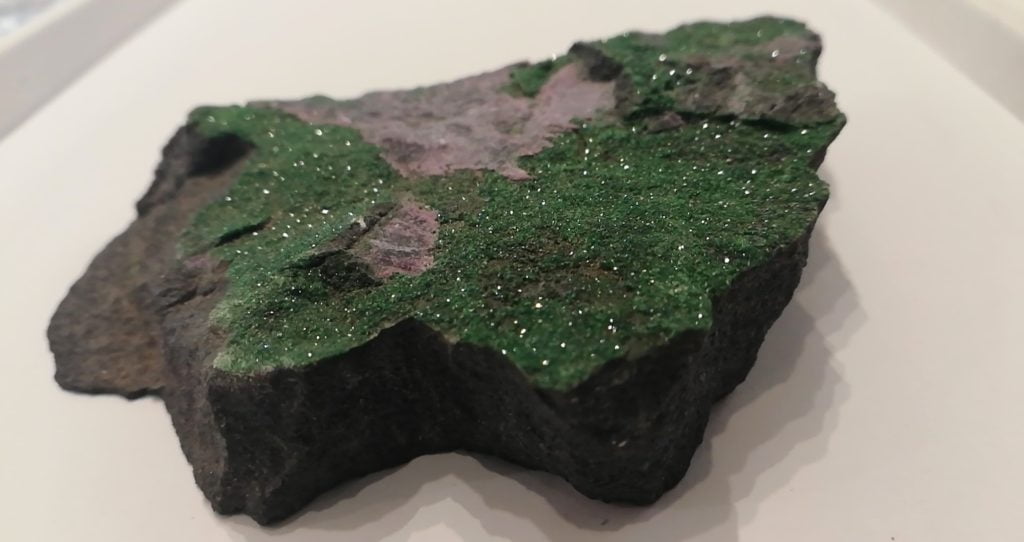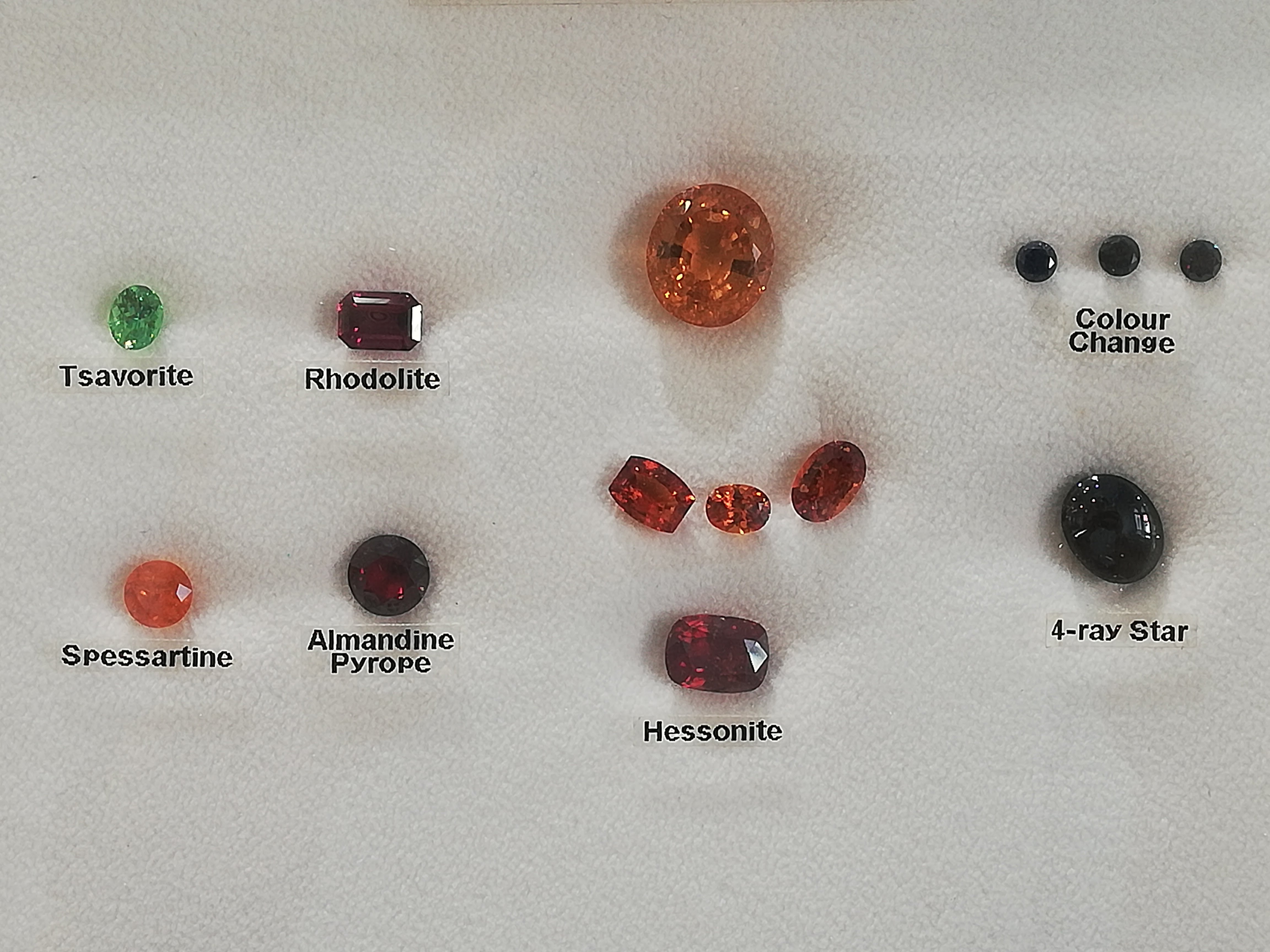January Birthstone – GARNET
Red garnet is one of the gemstones that has a long history of its own, especially adorned by the Egyptian pharaohs who are not shy of showing off their wealth and love of gemstones. It remained a popular choice of gemstone through the Roman Empire era, and until the Middle Ages around 1500s that there was a sudden burst of garnet supply when a huge source was discovered in Bohemia, modern day Czech Republic.
Garnet was originally named in Latin as reference to the fruit pomegranate as red garnet looks like the bright little seeds inside the fruit. Red garnets can be found throughout the world in all types of rocks, igneous, sedimentary, and metamorphic, thus making it a rather common yet beautiful gemstone. However, not all species of garnet are as common as the red garnet. Apart from red, garnet also can be deep purple, fanta orange, yellow, brown, emerald-green, and the incredibly-rare blue.
Top: Red garnet rough; Bottom: Pomegranate seeds
Appearance wise, different coloured garnets look completely distinct and may be thought to be another mineral itself. But the fact is, garnets are a set of closely related mineral species that form a group of mineral. All garnets belong to the cubic crystal system but slightly differ in chemical composition depending on the species. There are almost forty garnet species. Five of them are commercially important as gems, those are pyrope, almandine, spessartine, grossular, and andradite. A sixth garnet species, uvarovite, grows in tiny packed crystals too small to be cut and seldom set in jewellery but usually seen as collector’s piece due to its rarity.
As mentioned above, every garnet is under the cubic system and their typical rough habit is dodecahedral. Atoms in the cubic system tend to grow in a uniform and symmetrical manner, causing the habit to be equal on all sides although misshapes frequently occur.
Garnets have a relatively good hardness of 6.5 to 7.5 on the Mohs scale and suitable for any jewellery settings as it does not have cleavages. Moreover, garnet is a singly refractive stone, thus it does not have pleochroism which makes it simpler for cutters as there is no need to position the stone to display a desired colour.
While the physical properties of garnet is somewhat straightforward, the chemistry within garnet species is a complicated one. Garnets can be divided into two majorities and it is by their native chemical they composed of. First is aluminium, consisting of pyrope, almandine, and spessartine. Second is calcium, consisting of grossular, andradite, and uvarovite.
Aside from species of garnet, there are a variety of species. The most notable varieties are rhodolite of pyrope-almandine, demantoid of andradite, hessonite and tsavorite of grossular. The colours of each variety and species can be caused by its own chemical composition or trace elements. Specifically, red in garnet is caused by iron or magnesium; purple is caused by both iron and magnesium; orange is caused by both manganese and iron; yellow is caused by iron; green is caused by vanadium or chromium.
Top: An array of garnet varieties; Bottom: Uvarovite garnet
Usage of garnets are plentiful, be it as a piece of jewellery, a piece of collection for a collector, or even industrial tools. Red garnets are no stranger being a jewellery since ancient Egypt to the Middle Ages and entering the Modern Era. While most varieties of garnet enjoyed their long history of existence and admiration, some are getting the attention they deserved as recently as the late 1950s.
Tsavorite, a variety of grossular garnet, was an unknown mineral first brought to light by a British geologist who is also a consultant of Tiffany & Co, then the jewellery powerhouse named the new gem after Tsavo National Park of Kenya. Tsavorite green is coloured by vanadium and it exhibits an intense green that is capable of rivaling even the top quality emerald even so with lesser inclusions.
Gemstones are no stranger to inclusions due to the multi-mineral growth environment under the crust and mantle of the Earth. Most inclusions are deemed a hindrance to the quality of the gem that bound to be a jewellery. Yet, a variety of andradite garnet namely demantoid, blooms when it has this one-of-a-kind inclusion called horsetail. The horsetail inclusion is a radiating asbestos-type fibres that gently curve and twirl inside the stone as if a descending horse tail after being stroked. So far only Russian demantoids possess this unique feature and is most prized by collectors.
Left: A tsavorite ring; Right: A horsetail inclusion in a demantoid garnet
In 2017, blue garnets were introduced to the world. It was found near the border of Tanzania and Kenya. The ultra-rare blue colored garnet possesses a slight colour shift from blue to teal compared to the classic colour change from purplish red to bluish green. It’s currently too scarce to be put in commercial use and not much is known about it. GIA had obtained few of the samples for further testing.
Furthermore, the uses of garnet are not limited to jewellery itself. None gem quality garnets are being utilised as an industrial material. Garnet is most commonly used for waterjet cutting, where garnet powder is mixed with water in a high pressure jet to cut metal, ceramic, or stone that produces very little dust and at a low temperature. Other uses also include water filtration and abrasives such as abrasive papers and blasting.
To conclude, garnet is an all-rounded mineral. Appreciated by many for its colour, beauty, rarity, and applicability. Garnet will still have a huge role in the gem industry in the foreseeable future.








